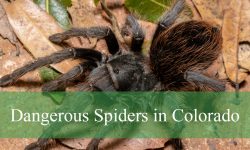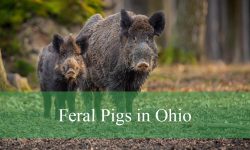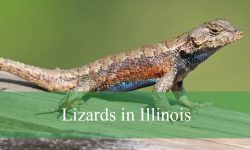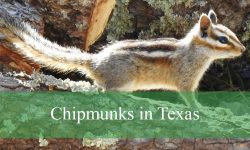Virginia is home to a fascinating variety of bird species, and among them, the striking Black and White Birds in Virginia stand out for their bold and contrasting plumage. These birds are not only beautiful but also easy to identify, making them favorites for birdwatchers and nature enthusiasts across the state.
Exploring forests, parks, or even backyards in Virginia often leads to spotting several of these iconic black and white birds. Understanding their unique markings and behaviors will help you recognize and appreciate the diversity of Black and White Birds in Virginia.
In this article, we’ll introduce you to 7 notable species, complete with pictures and identification tips. Get ready to discover the fascinating world of Virginia’s black and white birds and enhance your birdwatching experience.
Common Black and White Birds Found in Virginia
White-breasted Nuthatch

The White-breasted Nuthatch is easily identified by its stout body, blue-gray upperparts, and bright white face and underparts. It has a distinctive black cap that extends down to its nape, giving it a sharp, masked appearance. This bird is about 14 to 16 centimeters long and weighs roughly 18 to 30 grams, making it slightly larger and stockier than many songbirds.
Known for its unique climbing behavior, the White-breasted Nuthatch often moves head-first down tree trunks and branches, unlike most birds that climb upwards. It uses its strong feet and sharp claws to cling tightly to bark surfaces while searching for insects hidden in crevices. Its nasal, slightly nasal call is often heard echoing in wooded areas.
This species’ diet consists mainly of insects and spiders during spring and summer, switching to seeds and nuts in the colder months. It is famous for wedging large seeds into tree bark cracks and hammering them open with its strong bill. In Virginia, White-breasted Nuthatches often visit feeders offering sunflower seeds, peanuts, and suet.
Habitat-wise, they prefer mature deciduous and mixed forests with plenty of large trees, as well as suburban woodlands and parks. In Virginia, they are widely distributed throughout the state, from the Appalachian foothills to coastal plains, favoring areas with abundant tree cover and suitable nesting cavities.
Black-capped Chickadee

The Black-capped Chickadee is a small, distinctive songbird well known for its striking black cap and bib contrasted by white cheeks. Its body feathers are mostly soft gray on the back and flanks, with a creamy white underside. Measuring about 12 to 15 centimeters in length and weighing only 9 to 14 grams, this tiny bird is lightweight and agile. Its short, stout bill helps it forage efficiently for insects and seeds.
Behaviorally, the Black-capped Chickadee is lively and curious, frequently flitting among branches as it searches for food. It is highly social, often forming small flocks especially in the colder months to conserve heat and improve foraging success. Their characteristic call sounds like “chick-a-dee-dee-dee,” which varies in intensity to communicate danger or alert other birds.
In terms of diet, the Black-capped Chickadee mainly feeds on insects, spiders, and larvae during warmer months, shifting to seeds and berries in winter. They have an impressive ability to cache food in hidden spots and retrieve it later using spatial memory, which helps them survive harsh conditions. They are also frequent visitors to backyard feeders, attracted by sunflower seeds and suet.
This species inhabits mixed and deciduous forests, woodlands, and suburban areas with ample tree cover throughout Virginia. They are widespread across the state, from lowland forests to mountainous regions, thriving in both natural and human-modified environments. Their adaptability has made them a common and beloved backyard bird throughout Virginia.
Downy Woodpecker
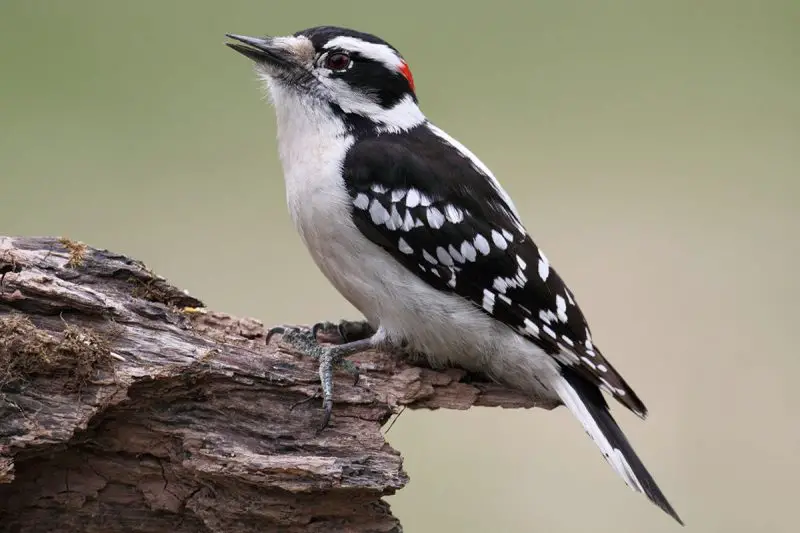
The Downy Woodpecker is the smallest woodpecker species in North America, recognizable by its black-and-white patterned plumage. It features a white back and belly, black wings with white spots, and a black head with a white stripe above and below the eye. Males have a small red patch on the back of their heads. The Downy Woodpecker measures about 14 to 18 centimeters in length and weighs between 20 and 30 grams.
This bird is often seen clinging to tree trunks, branches, and even wooden structures, pecking to find insects or create nesting cavities. Its drumming sound is softer compared to larger woodpeckers. It’s active and agile, frequently flicking its tail while foraging on bark surfaces and dead wood.
Primarily insectivorous, the Downy Woodpecker feeds on beetle larvae, ants, caterpillars, and spiders. It will also consume seeds, berries, and occasionally suet from feeders, especially in winter. Their small size allows them to probe narrow bark crevices unreachable by larger woodpeckers.
In Virginia, Downy Woodpeckers are common year-round residents found in a variety of habitats including deciduous forests, parks, gardens, and suburban areas. They adapt well to human presence and are frequent visitors at backyard feeders, making them one of the most familiar woodpecker species in the state.
Hairy Woodpecker
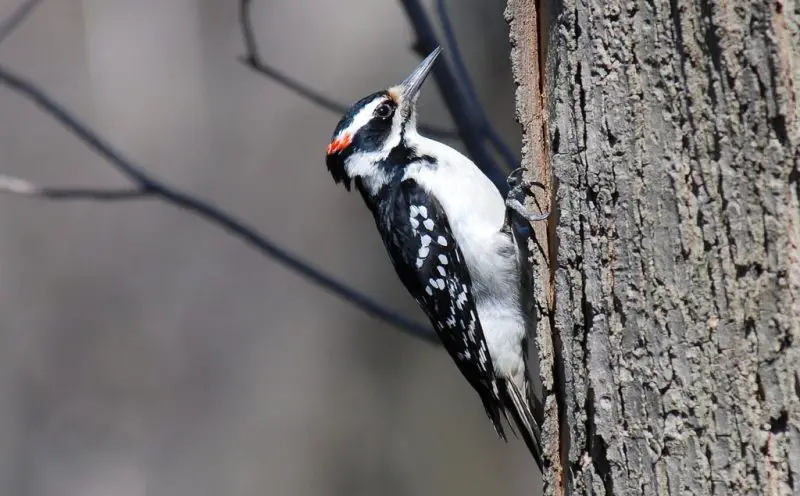
The Hairy Woodpecker closely resembles the Downy Woodpecker but is noticeably larger, with a longer bill and less spotted wings. It has a similar black-and-white plumage pattern with a white underside and black wings that may show white spots or bars. Adult males also display a red patch on the back of their heads. Hairy Woodpeckers measure roughly 18 to 25 centimeters in length and weigh between 40 and 60 grams.
These woodpeckers exhibit typical woodpecker behavior, often seen clinging vertically on tree trunks and branches while drumming loudly to find insects or establish territory. Their strong bills enable them to excavate deep into wood to extract larvae and other insects. They can also use their tongues to probe for prey within bark crevices.
Hairy Woodpeckers feed mainly on insects such as beetles, ants, and wood-boring larvae but also eat seeds and fruits, especially in winter when insects are scarce. They may visit suet feeders and are sometimes seen caching food in bark cracks for later use.
In Virginia, Hairy Woodpeckers inhabit mature forests, woodlots, and even urban parks. They are widely distributed throughout the state in habitats with large trees, ranging from mountainous regions to coastal forests. Their adaptability and size help them thrive in a variety of wooded environments.
Black-and-white Warbler
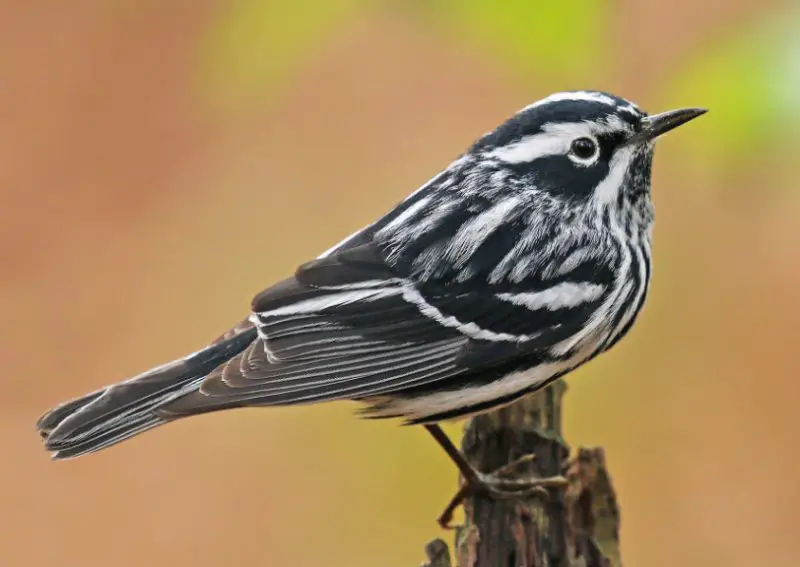
The Black-and-white Warbler is a small songbird notable for its striking black and white striped plumage that resembles a tiny zebra. It has a long, slender body about 12 to 14 centimeters long and weighs roughly 8 to 12 grams. This warbler’s unique patterning, with bold black streaks on a white background, makes it one of the easiest warblers to identify in the field.
Behaviorally, the Black-and-white Warbler is an active forager often seen creeping along tree trunks and branches in a manner similar to a nuthatch. It uses its slightly curved bill to probe bark crevices and foliage for insects and spiders. This species is highly agile and persistent, frequently moving up, down, and sideways as it searches for prey.
Its diet primarily consists of insects and spiders, including caterpillars, beetles, and ants. During migration and winter, it may also consume small amounts of fruit and berries. The Black-and-white Warbler typically forages in mature deciduous or mixed forests, favoring areas with plenty of tree bark and leaf litter.
In Virginia, the Black-and-white Warbler is a migratory species that arrives in spring to breed in forests across the state and departs in fall. It is commonly found in wooded habitats, parks, and sometimes suburban areas with mature trees. Though relatively widespread, it is most abundant during migration seasons.
Dark-eyed Junco (Slate-colored)
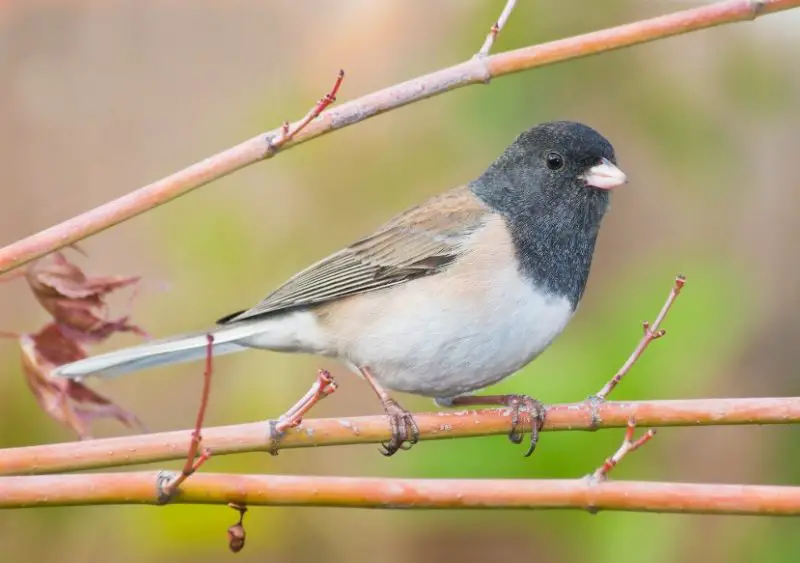
The Dark-eyed Junco, especially the slate-colored form, is a small, round-bodied sparrow with a slate-gray head and upperparts, white belly, and pinkish bill. Adults typically measure 15 to 17 centimeters in length and weigh around 20 to 30 grams. Its contrasting dark gray and white coloration is one of the most familiar winter bird images in Virginia.
Dark-eyed Juncos are ground foragers that prefer open woodlands, forest edges, and brushy fields. They commonly hop on the ground, searching for seeds and insects. Their behavior is somewhat shy and elusive, though they readily visit feeders during the colder months.
Their diet consists mainly of seeds during fall and winter, but they consume insects and other arthropods during spring and summer. These birds are often seen in flocks, especially in winter, which aids in locating food and protection from predators.
In Virginia, the Dark-eyed Junco is a widespread winter visitor, arriving in late fall and departing by early spring. It favors open, wooded habitats, suburban yards, and parks. Its presence is a welcome sign of winter for many birdwatchers.
Red-breasted Nuthatch (winter visitor)
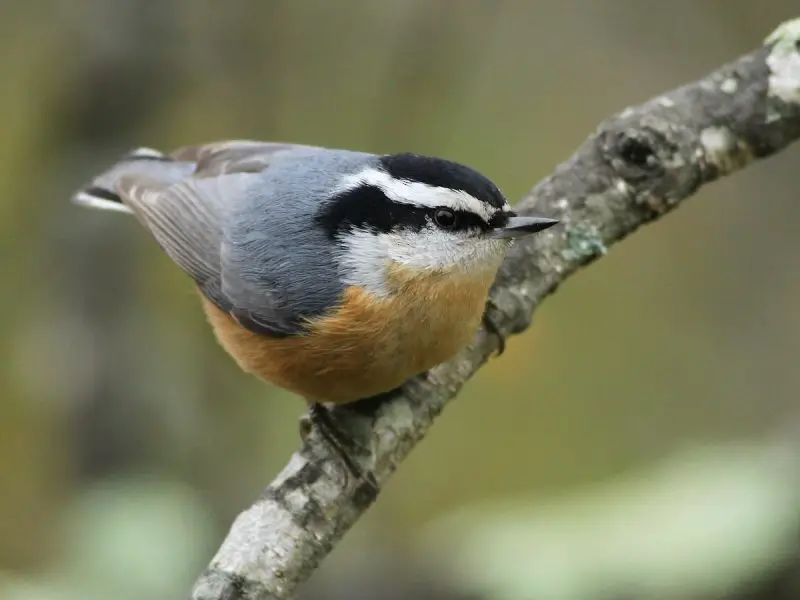
The Red-breasted Nuthatch is a small, stocky bird with a striking black eye stripe, white face, and rusty reddish underparts. It measures about 11 to 13 centimeters in length and weighs approximately 10 to 14 grams. Its sharp, slightly upturned bill and distinctive coloring make it easy to identify among Virginia’s winter birds.
Behaviorally, the Red-breasted Nuthatch is highly acrobatic, often climbing down tree trunks headfirst while probing bark for insects and seeds. It has a nasal, rapid “yank-yank” call that echoes through coniferous forests where it primarily dwells.
Its diet consists mainly of insects in warmer months and seeds, especially conifer seeds, during the winter. It frequently visits feeders offering sunflower seeds and suet, and it is known to cache food for later consumption.
In Virginia, the Red-breasted Nuthatch is a winter visitor, typically appearing from late fall through early spring. It prefers coniferous and mixed forests, especially in mountainous regions, but occasionally moves into lower elevations and suburban areas when food is scarce. Its presence is less common than that of the White-breasted Nuthatch, making it a notable sight during cold months.
FAQ about Black and White Birds in Virginia
What are some common black and white bird species found in Virginia?
Virginia hosts several distinctive black and white birds, including the Black-capped Chickadee, White-breasted Nuthatch, Downy Woodpecker, Hairy Woodpecker, and Black-and-white Warbler. These species are recognizable by their striking plumage and are found across various habitats in the state.
How can I identify black and white birds in Virginia?
Black and white birds in Virginia often have contrasting plumage patterns such as caps, stripes, or spots. For example, the Black-capped Chickadee has a black cap and bib with white cheeks, while the White-breasted Nuthatch features a black crown with a white face and underparts. Observing size, behavior, and habitat can also aid identification.
Where do black and white birds typically live in Virginia?
These birds inhabit a range of environments, from deciduous and mixed forests to suburban parks and gardens. Species like the Downy and Hairy Woodpeckers prefer mature woodlands, while the Black-and-white Warbler frequents forested areas during migration. Many also adapt well to backyard feeders.
What do black and white birds eat in Virginia?
Diet varies by species but often includes insects, spiders, seeds, nuts, and berries. For instance, the Black-capped Chickadee feeds on insects and seeds, while woodpeckers consume insect larvae hidden in tree bark. Many of these birds visit feeders offering sunflower seeds and suet.
Are black and white birds in Virginia year-round residents?
Some species, such as the Black-capped Chickadee and Downy Woodpecker, are year-round residents. Others, like the Black-and-white Warbler and some nuthatches, may be migratory or seasonal visitors depending on the time of year.
How can I attract black and white birds to my backyard in Virginia?
Providing bird feeders stocked with sunflower seeds, suet, and peanuts, along with natural habitat elements like trees and shrubs, can attract many black and white bird species. Maintaining a water source and avoiding pesticides will also help create a welcoming environment.
Are any black and white birds in Virginia considered rare or threatened?
Most black and white birds commonly seen in Virginia, such as chickadees and woodpeckers, are not considered threatened. However, habitat loss and environmental changes can impact populations locally. It’s important to support conservation efforts to protect their habitats.


